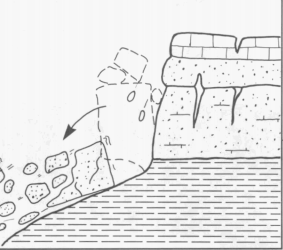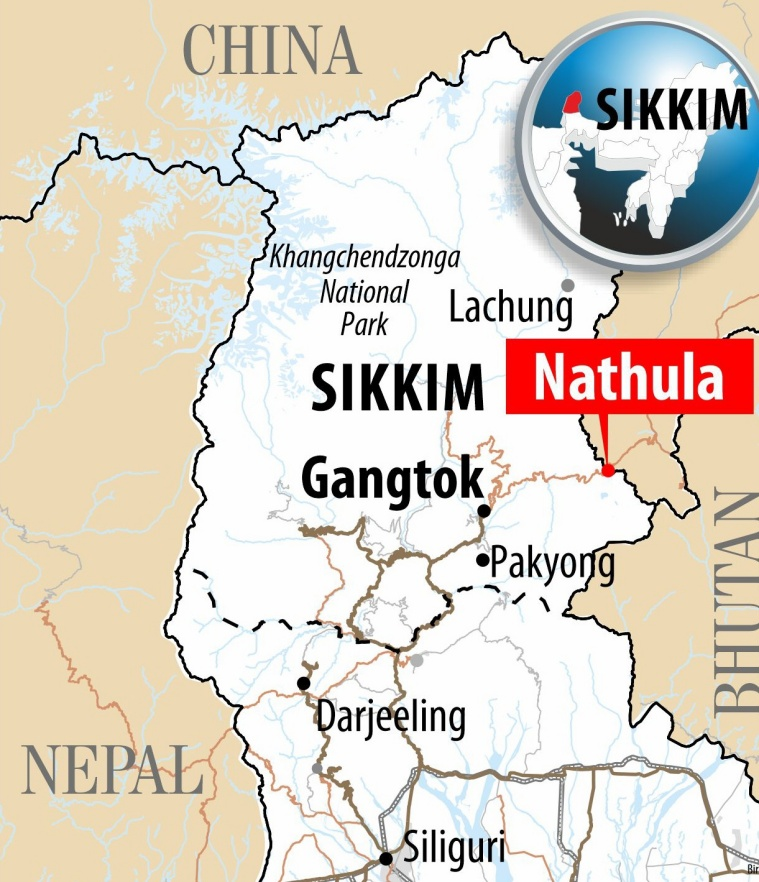Important Facts For Prelims
Avalanche
- 06 Apr 2023
- 6 min read
Why in News?
Recently, a massive Avalanche hit Sikkim's Nathu La.
What is Avalanche?
- About:
- An avalanche is a sudden, rapid flow of snow, ice, and debris down a mountain or slope.
- It can be triggered by various factors such as heavy snowfall, rapid temperature changes, or human activity.
- Many regions that are prone to avalanches have specialized teams that monitor and control avalanche risks by using various methods such as explosives, snow barriers, and other safety measures.
- Types:
- Rock Avalanches (which consist of large segments of shattered rock),
- Ice Avalanches (which typically occur in the vicinity of a glacier),
- Debris Avalanches (which contain a variety of unconsolidated materials, such as loose stones and soil).
- Causes:
- Weather Conditions: Heavy snowfall, rapid temperature changes, strong winds, and rain can all contribute to avalanche conditions.
- Slope Conditions: The steepness, orientation, and shape of a slope can contribute to the likelihood of an avalanche occurring. Steep slopes with a convex shape are particularly prone to avalanches.
- Snowpack Conditions: The structure and stability of the snowpack can also contribute to avalanche conditions. Weak layers of snow or ice within the snowpack can cause it to collapse and trigger an avalanche.
- Human Activity: Skiers, snowmobilers, and other recreational users can trigger avalanches by their movements on the slope.
- Natural Events: Earthquakes, volcanic eruptions, and rockfalls can all trigger avalanches.
How are Avalanches different from Landslides?
- Avalanches and landslides are both types of mass movements, but they occur in different environments and involve different materials.
- An avalanche is a rapid flow of snow, ice, and debris down a mountain or slope, while a landslide is a movement of rock, earth, or debris down a slope or cliff.
- Avalanches typically occur in mountainous areas that have heavy snowfall and steep slopes. On the other hand, landslides can occur in a wide range of environments and can be triggered by various factors such as heavy rainfall, earthquakes, volcanic activity, or human activity.
- Both avalanches and landslides can be dangerous and potentially deadly, and it is important to take necessary precautions to avoid them.
What are India's Efforts in Managing Disaster?
- Establishment of National Disaster Reaction Force (NDRF):
- India has increasingly mitigated and responded to all types of disasters, including with the establishment of its NDRF, the world’s largest rapid reaction force dedicated to disaster response.
- India’s Role as a Foreign Disaster Relief:
- India’s foreign humanitarian assistance has increasingly included its military assets, primarily deploying naval ships or aircraft to deliver relief.
- In line with its diplomatic policy of “Neighbourhood First,” many of the recipient countries have been in the region of South and Southeast Asia.
- Contribution to Regional Disaster Preparedness:
- Within the context of the Bay of Bengal Initiative for Multi-Sectoral Technical and Economic Cooperation (BIMSTEC), India has hosted DM Exercises that allow NDRF to demonstrate for counterparts from partner states the techniques developed to respond to various disasters.
- Managing Climate Change related Disaster:
- India has adopted the Sendai Framework for Disaster Risk Reduction, the Sustainable Development Goals (2015-2030), and the Paris Agreement on Climate Change, all of which make clear the connections among DRR, Climate Change Adaptation (CCA), and sustainable development.
What are the Key Facts of Nathu La?
- Nathu La, one of the highest motorable roads in the world, is a mountain pass in the Himalayan peaks situated on the Indo-Tibetan border 14450 ft. above sea level.
- Nathu means 'listening ears', and La means 'pass'.
- It is an open trading border post between India and China.
- The other passes located in the state of Sikkim are Jelep La Pass, Donkia Pass, Chiwabhanjang Pass.
What are the Other Important Passes of India?
| Pass | Link/Features |
| Banihal Pass | Kashmir Valley with the outer Himalaya and the plains to the south. |
| Bara-Lacha-La Pass | Lahaul district in Himachal Pradesh with Leh district in Ladakh. |
| Fotu La Pass | Leh with Kargil of Ladakh |
| Rohtang Pass | Kullu Valley with the Lahaul and Spiti Valleys of Himachal Pradesh. |
| Shipki La Pass | Kinnaur district of Himachal Pradesh with Autonomous Region of Tibet, China. |
| Jelep La Pass | Sikkim with Autonomous Region of Tibet, China. |
| Lipu Lekh Pass | Chaudans valley of India with Autonomous Region of Tibet, China. It is located close to the tri junction of Uttarakhand (India), China and Nepal. |
| Khardung La | Ladakh with Siachen glacier. It is the highest motorable pass in the world. |
| Bom di La | It is in Arunachal Pradesh |






